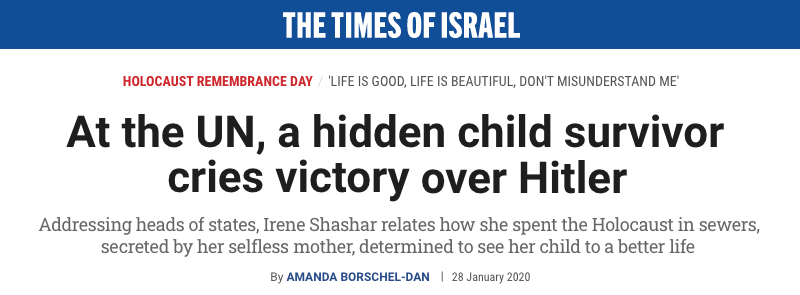
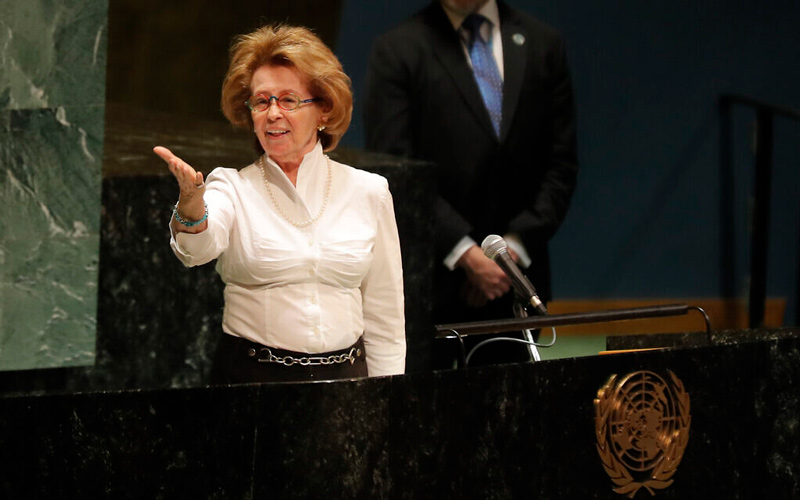
Not yet two when the Nazis invaded her native Poland, Holocaust survivor Irene Shashar experiences her years spent as a child hidden in the sewers of Warsaw in sensory flashes. Her father was slaughtered in the family’s cramped shared ghetto hovel when she was five. Shashar clearly remembers seeing his mangled corpse on the floor, the feeling of her elbow dipped into his spreading, iron-scented blood, oozing from a gash on his neck.
“I have images, flashes of memory of terrible, terrible things,” Shashar told The Times of Israel last week from her sheltered living community in the central Israeli city of Modi’in.
As we spoke, she was packing for a trip to New York to deliver a speech at the United Nation’s 2020 International Day of Commemoration in memory of the victims of the Holocaust. Along with Bergen-Belsen survivor Shraga Milstein, 87, Shashar was invited to share her story at the UN’s central ceremony on January 27.
As we spoke, the January 23 high-profile World Holocaust Forum in Jerusalem was playing on Shashar’s television in the background. She marveled that, whereas heads of state were speaking on that day, she — “Little me! Tiny one meter 46 centimeters tall me!” — would address some of these same people a few days hence.
“It’s wonderful that I’ll be carrying Israel with me to the UN,” she said in anticipation.
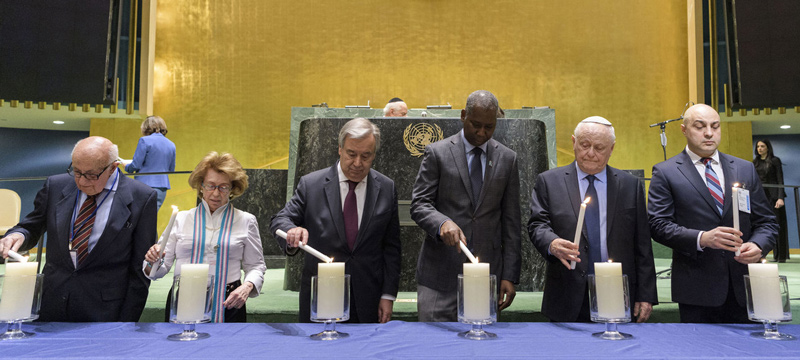
A now retired 40-year lecturer at the Hebrew University of Jerusalem’s Department of Spanish and Latin American studies, Shashar is comfortable speaking in front of a crowd. And while she has shared her story of survival around the globe, upon receiving the UN’s invitation she said she was initially taken aback.
“Can I go ahead and do it? Is it okay for me to speak in the name of 1.5 million children my age that cannot, and will never be able to speak to the world?” she recalled wondering. Eventually, she decided it was her responsibility and obligation to take up the UN’s gauntlet, “because I have survived.”
“I survived, that’s the main thing. Hitler didn’t win and I have proof,” she said, referring to her children and grandchildren.
On January 27, Shashar delivered her 10-minute remarks at the UN headquarters in the crowded assembly room. As part of the ceremony, she also lit a memorial candle alongside other speakers, including former president of the UN International Residual Mechanism for Criminal Tribunals, Theodor Meron; UN Secretary-General António Guterres; President of the 74th session of the United Nations General Assembly Tijjani Muhammad-Bande; survivor Milstein; and Dan Pavel Doghi, Chief of the Contact Point for Roma and Sinti Issues of the Office for Democratic Institutions and Human Rights of the Organization for Security and Co-operation in Europe.
Survival through iron will
Shashar is a living testament to determination. Through her mother’s creativity and sheer will, she survived the war hiding in sewers or locked in closets with her beloved doll, her Laleczka, left with a morsel of hard-won sustenance and pot to relieve herself in.
“She saved my life a million times through the war,” she said.
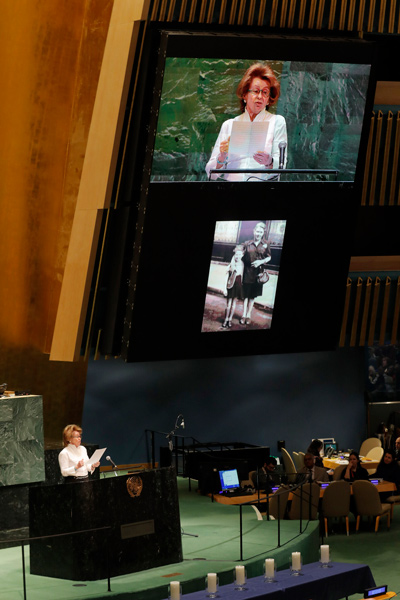
In Shashar’s snatches of memory of this time period, there are many unanswered questions: Shortly after the war, her mother died of heart failure. Shahar supposes that her blond and blue-eyed mother may have “passed” as a non-Jew, which helped them mix into the Aryan side of divided Warsaw. “I was a red head and my nose was not very Christian,” said Shashar, so she was hidden in wardrobes, “in dark places, in places that are not for living, but for animals that families had.”
She recalled her mother telling her that if she doesn’t call for help or cry, “all of this will be over soon and we’ll go out and play.” She was told she would received a new doll, since her beloved Laleczka was stained and sodden with feces-filled water.
“How long was that ? I cannot tell you, but it was in endless places. I was shoeless, cold, hungry. I was afraid,” she said. “At that age you don’t know what you’re afraid of. I was afraid of everything and anything. Mortality was part of my unknown question mark, and I was coming out of my childhood and very quickly, very very quickly. It was all part of the inferno of the Shoah,” she said, using the Hebrew word for the Holocaust.
Almost mid-sentences, she stopped herself. Now, as in other places during our conversation, she laughed and said, as if to reassure this writer: “Life is good, life is beautiful, don’t misunderstand me.”
Wiping the slate clean
Shashar and her mother survived the war years hiding in the Warsaw ghetto. Later, they moved to France, where Shashar was sent to an OSE orphanage for Jewish children survivors in Andrésy while her mother stayed in Paris to work. She died two years later when Shashar was 11.
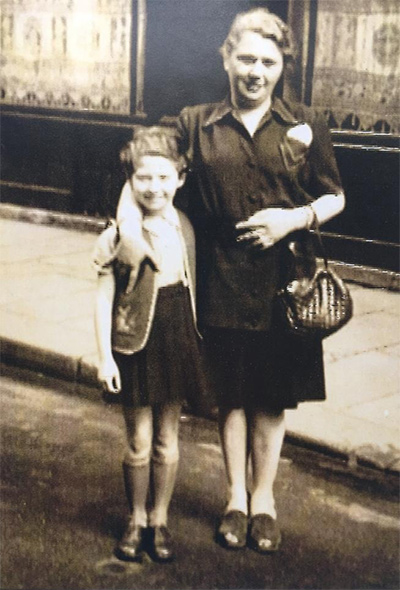
“She used to come and visit on Sundays, then one Sunday she never came and the principals told me to put a white shirt on because we were going to Paris for the funeral. That’s where I needed my mother most, but she left me,” she said.
But it was her mother’s pre-planning that saw Shashar reach more welcoming shores in Peru — and a new family — when she was adopted by her mother’s favored niece.
“My mother’s instruction before her death were for me to be taken to her beloved niece’s family after the war, Mr. and Mrs. Michael and Fela Topilsky in Lima, Peru. And her wish after her death was fulfilled: Mr. Topilsky, senior , took me from Paris to Zürich to Lima, Peru,” explained Shashar.
“I started a new life — was adopted, given a bed, white linen that was clean, and a room, and sent to school. I studied Spanish — I already knew French — and suddenly had parents that loved me and a brother, and later a sister was born,” she said. Today, both of her siblings, Marcel and Sonia, also live in Israel.
She studied hard to be worthy of her new parents, she said, and came to the United States for university. Although offered a job in New York, she found herself moving to Israel at age 25 when she was the youngest faculty member to hold a post at the Hebrew University.
Settled and safe, for many years, Shashar wiped the slate clean on her life prior to reaching the South American country and her personal narrative began with Peru. She never spoke about her time as a hidden child during the war, and her own children, Ilana, who is today a social worker, and David, an obstetrician, were unaware of her past.
“We survivors, when we did become survivors and came to a free world and landed somewhere, somehow around the world, we hesitated to talk about what happened to us,” she said. “It was a past that we wanted buried to start over again, and start from the beginning, and to such an extent that my children did not know about the fact that I was a survivor.”
She said that, although in retrospect it was illogical, she didn’t want her children singled out at school for having a survivor parent. In Israel at that time, many of their peers did have relatives that had survived the Holocaust, and much family that perished.
“Until one day I received an invitation from the Ministry of Education in Israel to accompany 180 youngsters to Poland for the March of the Living as a witness,” she said. Facing the snail mail envelope, she realized that if she took up the challenge to bear witness, she would have to void the “perfect story” of her life that she had concocted for herself, and her children.
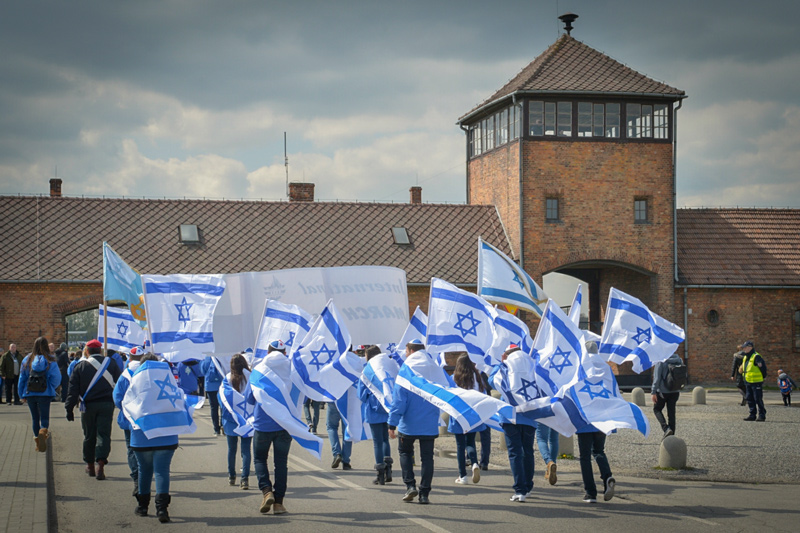
“They were adults, so I had to tell them the truth and they were of course, not shocked, but considered that I should have told them,” she said.
The obligation to bear witness
Today, Shashar said, she accepts each and every speaking engagement that is extended.
“We survivors are not going to be here in another 10-12 years. Who is going to talk about it? Who is going to say, ‘I was there,’” she asked.
She said that when she speaks in front of an audience, she allows them to help her carry her burden of memory.
“I transfer the message of my own story… how do we portray this to the next generation, second and third, so they will be able to repeat and portray it?”
For Shashar, the answer is education.
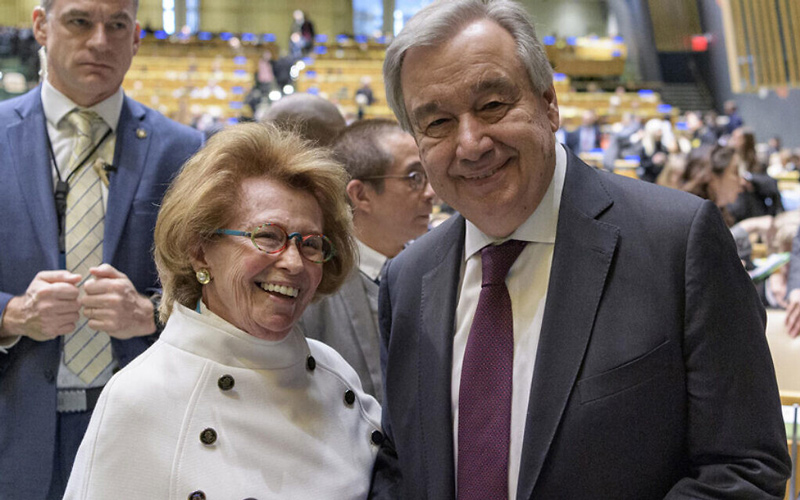
The UN’s ceremony was organized under the theme “75 years after Auschwitz – Holocaust Education and Remembrance for Global Justice.” Fittingly, along with her flourishing family tree, as a lifelong educator, Shashar hopes to leave a legacy of Holocaust education curriculums.
Although they now live in Israel, she and her life partner, Dr. Daniel Schydlowsky, many years ago attended school together in Peru. Together, for the past several years the academic couple has attempted to officially institute a state-mandated curriculum teaching the Holocaust in their former homeland.
The response, she said, is “not very encouraging.” The revolving cadre of education ministers and officials don’t want to commit to a program, she said, and likely don’t have a budget to train its teachers for it. She hopes to involve Israel’s Yad Vashem, a massive Holocaust memorial and research institution that has a robust education wing, in training the potential teachers, either in Israel, or through sending a delegation to Peru.
“It’s a few years’ battle, trying to convince the educational authorities to make that chapter in the history of the curriculum official,” she said. “It is something that we have to work on and not something that will be done by itself.”
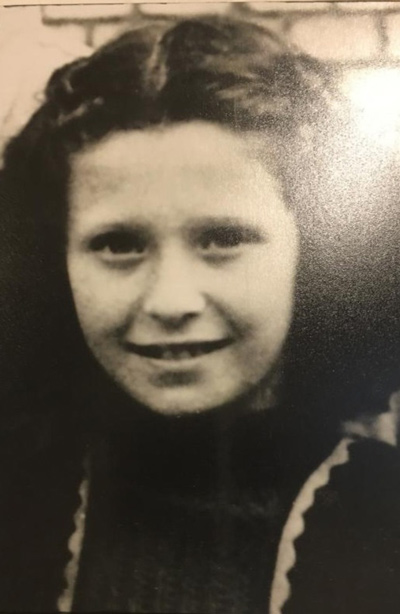
Regardless of where she speaks, Shashar credits her mother as her savior.
“Because of my mother’s act of courage and resiliency, I was victorious over Hitler. Thanks to her, I was blessed with the chance to survive, to thrive in adulthood. Thanks to her, I was blessed with the opportunity to have children and grandchildren. Because I sowed my family tree, I conquered Hitler himself,” she told the audience at the UN.
“This is a tribute to my mother, as is my life – along with the lives of my children and grandchildren and those whom they have touched with their kindness and generosity. Mother’s courage to act boldly and decisively in the face of danger delivered not only my life to safety, but also my legacy. Her legacy. Our legacy as Jews,” she said.